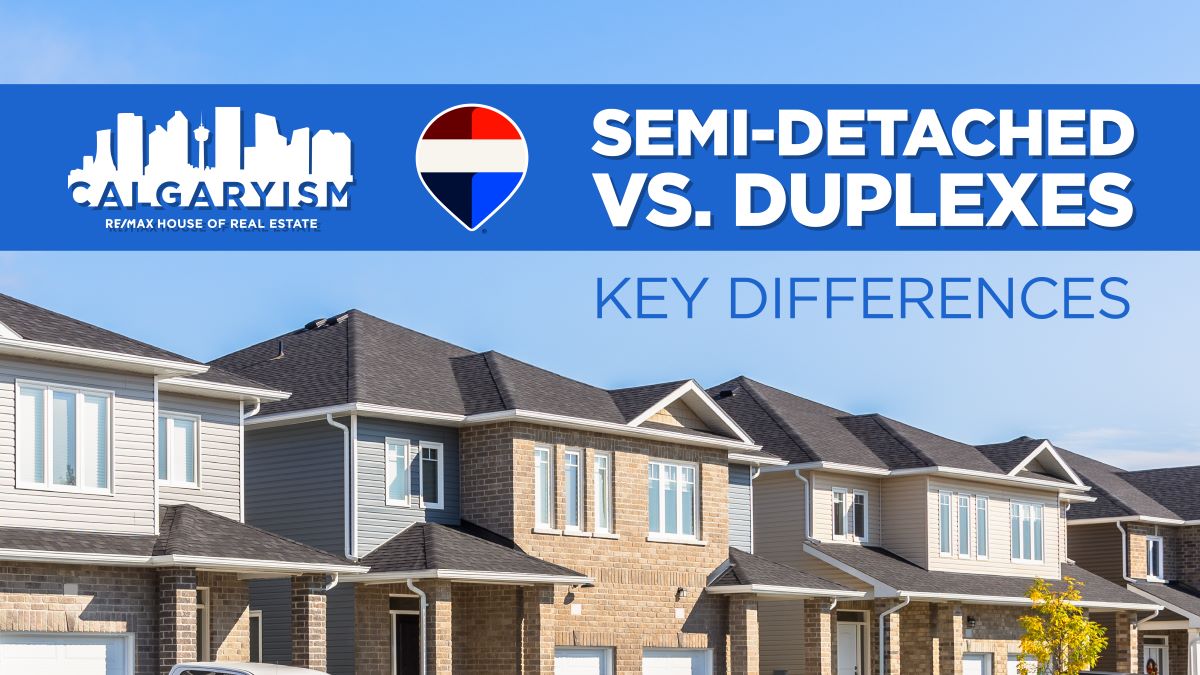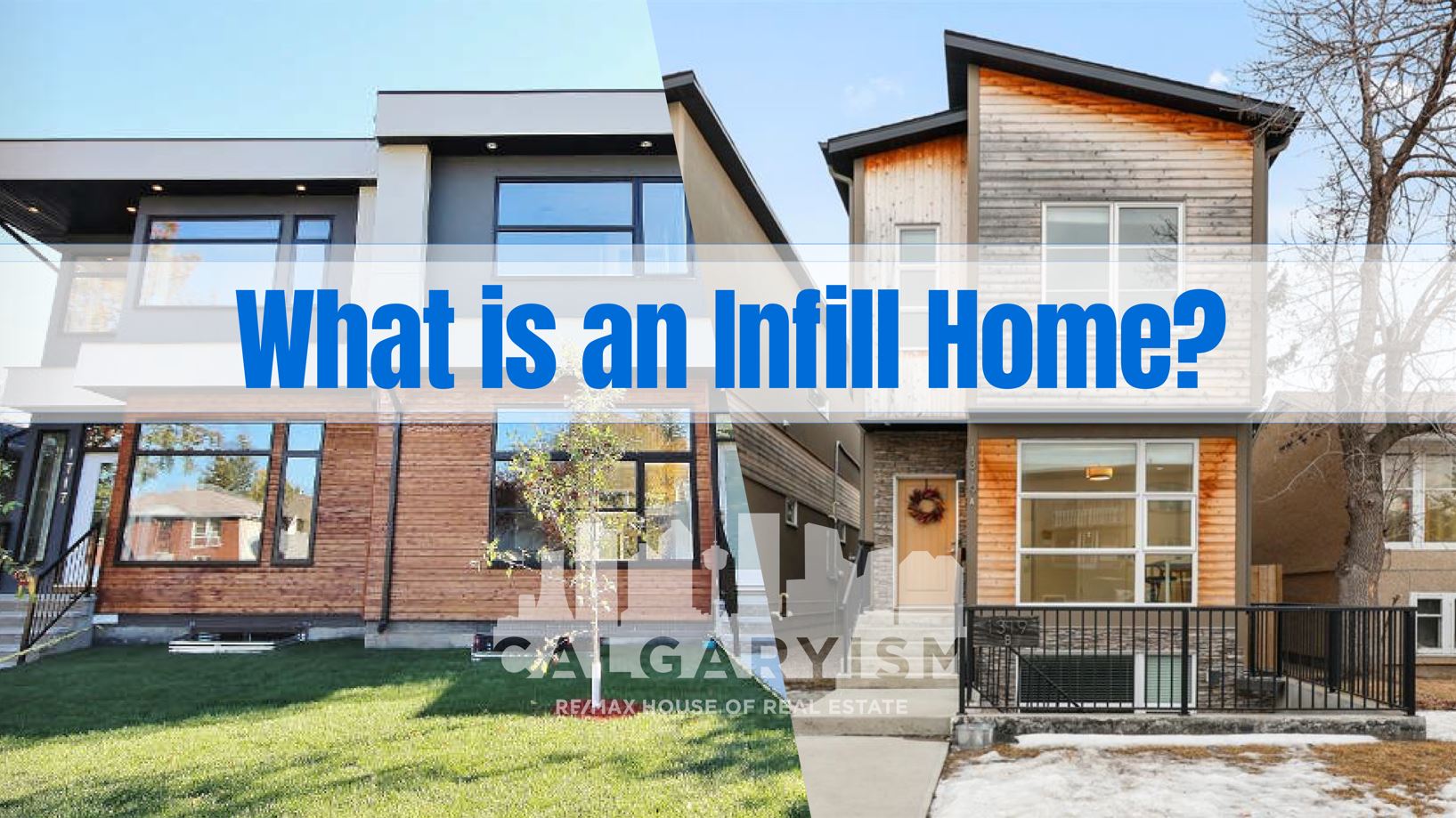Main Content
Semi-Detached vs. Duplex: 6 Key Differences Before Buying

Buying a property is a significant investment, so understanding the available options for you is crucial to making the right decision. Two common housing types—semi-detached homes and duplexes—are often compared by homebuyers, but not all are aware of which one is the best fit. In some cases, the difference between the two property types can be confusing.
Below, we explore the key features of semi-detached and duplex homes, what distinguishes them from each other, and the benefits of purchasing one over the other, depending on your situation. Understanding these facts is essential for any potential buyer who wants to be 100% satisfied with their next real estate transaction. If you’re considering semi-detached homes versus duplexes, understanding these differences can help ensure you make the right choice for your needs and investment goals.
What is a Semi-Detached Home?
A semi-detached home, or “semi-detached,” is a property that consists of two separate residences side by side that are connected by one common wall. This type of home is also known as a semi-detached dwelling.
Each has its own entrance and outdoor space, making it an ideal option for those who value privacy while still seeking affordable home ownership opportunities when compared to larger detached single-family houses.
Key Features of Semi-Detached Properties
- Shared Common Wall: Every semi-detached house shares one horizontal wall with its neighbour that is perpendicular to the ground, making them distinct from fully detached houses. This shared wall enhances the building’s structural integrity by providing additional stability and strength.
- Improved Sound Insulation: Modern semi-detached often feature advanced sound insulation in the shared wall, significantly reducing noise transfer and enhancing privacy for residents.
- Separate Entrances: This adjacent layout helps boost privacy by having its own independent entrance
- Private Yards: Semi-detached often include a private front or back yard, perfect for outdoor activities for families, children, and their pets
- Cost-Effective: On a comparative basis, semi-detached houses are more affordable than single-family homes while still offering a good amount of privacy from neighbours
- Symmetrical Design: Often enough, both homes in the semi-detached structure will have symmetrical floor plans and exterior designs
What is a Duplex Home?
A duplex is a single building that contains two separate dwellings, also referred to as two units. Each unit is a distinct living space with its own features, providing privacy and independence. Not to be confused with semi-detached properties (although they could technically be considered such if adjacent to one another), duplexes can be arranged either side-by-side or one on top of the other, also known as an “up-down.” Each unit typically has a separate entrance, further enhancing privacy and rental potential. A duplex is often owned by one owner who possesses both units, distinguishing it from other multi-family homes.
In some instances, up-down duplexes are combined to make a “fourplex,” a highly attractive type of property for investors. However, duplexes are especially appealing to those seeking investment opportunities or multi-family living options at a lower comparative cost.
Key Features of Duplex Properties
- Two Living Units: Each unit is a separate dwelling, fully self-contained with its own entrance, kitchen, and bathroom – all the requirements needed for a legal residence
- Investment Opportunity: Duplex owners often rent out one dwelling while living in the other, generating passive income that can help supplement their lifestyle and financial goals
- Flexible Layouts: Duplexes may be designed vertically (stacked dwellings) or horizontally (side-by-side); a general rule of thumb is that urban areas often see more up-down layouts, while suburban often see side-by-side formats
- Shared Outdoor Areas: Duplexes may have shared outdoor spaces, but this depends on the layout; an up-down duplex may share the front and/or back yards, legally known as “amenity” spaces
- Affordable Multi-Unit Option: Duplex properties offer an affordable way to house two families under one roof – in many instances, two related families live under the same roof to make life and communication more convenient
- Ownership Models: Duplexes can have different ownership models, such as single ownership of the entire property or separate ownership of each dwelling through condominium arrangements, which can affect autonomy, management, and income potential.
Important Differences & Considerations
View this post on Instagram
#1 – Ownership and Configuration
Semi-Detached: Typically feature two separate units, each with its own title and sitting on its own lot. This setup allows each homeowner to enjoy complete independence, with their own entrance, private outdoor spaces, and the freedom to manage their property as they see fit. This level of autonomy is especially appealing to those who value privacy and want to avoid shared maintenance responsibilities.
Duplexes: Often owned by a single entity, with both units located on a single lot. In many cases, duplexes have shared walls and may include common areas that require cooperation between owners or tenants. Shared maintenance is a key aspect of duplex living, making effective communication essential for smooth day-to-day management. Additionally, the configuration of duplexes can impact outdoor spaces—while some may offer private areas, others have shared or limited outdoor spaces, which can influence your lifestyle and overall use of the property.
#2 – Outdoor Yard Space
Semi-Detached: Typically offer individual yards for each unit, providing private outdoor areas for relaxation, gardening, or entertaining. This added outdoor space is ideal for families with children or pets who might enjoy using a private yard.
Duplexes: Outdoor areas may be smaller, shared, or completely absent, as many duplexes prioritize space for additional units. However, shared outdoor spaces may foster a sense of community among tenants or owners.
#3 – Investment Opportunities
Semi-Detached: Designed for single-family use, semi-detached properties typically don’t offer as much potential for generating rental income. Still, they can appreciate steadily over time depending on market conditions, making them a good choice for long-term value growth. For buyers focused on long-term appreciation, semi-detached homes can be considered a good investment.
Duplexes: Their dual-unit structure can make them a lucrative option for those looking to generate rental income. Additionally, duplexes tend to attract both homeowners and investors, ensuring higher demand in various markets. With strong rental potential and broad market appeal, duplexes are often a sound investment property as long as market conditions are right and everything fits into your real estate goals.
#4 – Construction Type and Maintenance
Semi-Detached: Simplified maintenance, as owners are only responsible for their respective sides, except for the single shared wall. This lighter maintenance burden enables greater independence in managing the property. Semi-detached homes are often built to modern standards or codes, offering updated features and energy efficiency.
Duplexes: Maintenance may involve coordination between tenants or shared common facilities. On the bright side, shared costs may reduce the financial strain of repairs for individual owners. Floor plans are often copied and pasted between duplexes, especially in “up-down” variations.
#5 – Affordability and Expenses
Semi-Detached: Often more affordable upfront compared to duplexes due to their simpler design and ownership structure. Semi-detached homes are typically available at a lower price than detached houses or duplexes, making them especially attractive for buyers on a tight budget. This affordability often makes it a more viable option for first-time buyers or smaller families.
Duplexes: Higher initial costs, given their potential to yield income through renting out one of the units and sometimes complex permitting and approval structures, which can increase initial costs. However, the rental income can offset living expenses, often making duplexes a cost-effective option over time.
#6 – Lifestyle and Community
Semi-Detached Homes: Semi-detached homes tend to foster a quieter, more private lifestyle, making them ideal for those seeking a traditional family environment with fewer shared spaces and limited neighbour interactions, typically confined to the adjoining wall. This type of dwelling often appeals to buyers who seek a sense of community without compromising on privacy or independence.
Duplexes: Living in a duplex can mean closer interactions with neighbours, especially if both units are occupied by owners or long-term tenants. This proximity can foster a greater sense of camaraderie and support, but it may also require more coordination regarding shared areas and building maintenance. Duplex living can be an excellent choice for those who value a sense of shared responsibility and neighbourly connection.
Semi-Detached Homes vs. Duplexes: Which is Best for You?
The choice between a semi-detached home and a duplex ultimately depends on your lifestyle, budget, and long-term goals. Semi-detached housing is often an economical and cost-effective option, making it ideal for first-time buyers, young families, or those seeking affordability and energy savings. If you prioritize privacy, a traditional family setup, and a simpler ownership structure, a semi-detached home might be your best fit. On the other hand, if financial flexibility, multi-generational living, or passive income appeals to you, a duplex could be the smarter choice.
Evaluate your current needs, financial capacity, and future aspirations. Whether you opt for a semi-detached house or a duplex, both offer unique advantages to cater to diverse housing needs. Select the option that best aligns with your current situation and future plans. When in doubt, contact an experienced local Realtor who can help guide you toward the best choice for your goals.
Semi-Detached vs Duplex: Frequently Asked Questions
What is the point of a semi-detached house?
A semi-detached house offers a middle ground between full privacy and affordability, giving homeowners their own living space while sharing one wall, which often results in lower costs and energy efficiency.
What is a detached duplex?
A detached duplex is a standalone building composed of two separate, self-contained homes—usually side-by-side or one above the other—without any physical connection to other properties.
Is a semi-detached better than a townhouse?
A semi-detached home typically provides more privacy and a larger yard than a townhouse, as you share only one wall rather than both sides; however, townhouses may offer lower maintenance via condo fees and communal amenities.
Is a duplex better than a townhouse?
Duplexes often offer more personal space and the potential for rental income, whereas townhouses typically feature community amenities and reduced exterior maintenance, making each option better suited for different lifestyles.
What are the problems with semi-detached houses?
Potential issues include noise transfer from the adjoining home, possible disagreements with the neighbour on shared maintenance, and slightly less privacy than a fully detached property.
What are the problems with duplexes?
Duplexes can face challenges, including sound transmission between units, disputes over shared responsibilities, and limitations on exterior customization due to joint ownership.
Required fields are marked*
- Airdrie
- Alberta
- Arts and Culture
- Blog
- Buying Tips
- Calgary
- Calgary Activities and Events
- Calgary Communities
- Calgary Condo Guide
- Calgary Infill Homes
- Calgary Luxury Homes
- Calgary New Condo Guide
- Calgary New Homes
- Calgary Real Estate Statistics
- Calgary Restaurants
- Calgary Townhomes
- Canada
- Condo Building Review
- Condos in Calgary
- Featured Blog Posts
- Featured Blogs
- First Time Home Buyers Guide
- Listings
- Moving to Calgary
- New Condo Projects
- Oil and Gas
- Selling Tips
- Slider
- Testimonials
- The Best in Calgary
- Uncategorized
- Video Testimonials
- Contact Us
- Search MLS®
- Sellers’ Guide
- Buyers’ Guide
- About Cody & Jordan
- Blog
- Testimonials
- Downtown Calgary
- SW Calgary
- SE Calgary
- NE Calgary
- NW Calgary
- Calgary Condos
- Calgary Townhomes
- Calgary Infills
- Calgary Luxury Homes
- New Calgary Homes
- New Calgary Condos
- Acreages for Sale
- Bungalows for Sale
- Duplexes for Sale




